Social Engineering, Race, and Geography in the 1970s
 When the geographer Peter Gould sat down to write his autobiography in 1990, he looked over a career of mapping the perceptual spaces of Swedes, Tanzanians and college students. Over that life, he had repeatedly claimed that his major contribution to knowledge had been primarily in the service of the state. Gould was the man who figured out how to draw a picture of the version of the nation in a given individual’s head: ask the person to name all the cities they can in the United States; map those.
When the geographer Peter Gould sat down to write his autobiography in 1990, he looked over a career of mapping the perceptual spaces of Swedes, Tanzanians and college students. Over that life, he had repeatedly claimed that his major contribution to knowledge had been primarily in the service of the state. Gould was the man who figured out how to draw a picture of the version of the nation in a given individual’s head: ask the person to name all the cities they can in the United States; map those. The results remind us that human beings live in worlds of constructed of personal experience, not in atlases. New Yorkers can name all the boroughs and a smattering of places on the East Coast; Chicagoans can name factories in the Midwest with no resonance at all in San Francisco. The studies he produced were magically suggestive of the distance between worlds: children of fishermen can name and draw every cove round an island; not so those who live on the mainland. Even the citizens of relatively homogenous civilizations, he suggested, could be separated by experience into separate universes of perception, interest, and prejudice.
For most of his career, Gould, like the geographers of his generation, claimed that these findings should interest state bureaucrats. Writing about his first “mental maps” in 1968, he claimed that his audience was bureaucrats “in government service” concerned with “income differentials” and the potential for relocating “migratory movements” in line with industry. Brian Berry of the University of Chicago was even more explicit, announcing to the Annual Conference of the Institute of British Geographers in 1970 that in the new world of “meritocratic élites,” geographers found themselves servants to the “needs of public policy.” He imagined a world where geographers would project the cities of the future that were “most likely to emerge in the future with and without public intervention” and so help functionaries decide and find the tools to shape the most preferable community possible.
This was hardcore social engineering: the idea was that geographers, like psychologists and other social scientists, would aid the twentieth-century state in helping poor people and people of minority races to assimilate, or failing that, in Berry’s words, to “monitor” contemporary developments and so apprise authorities of outbreaks of danger before they happened. Geographers varied in which elites they thought they were advising. David Harvey’s early work specifically targeted the reform of federal mortgage administration. Yi-Fu Tuan emphasized not policy but rather urban planning, and hoped that his literary analyses of landscape would help designers to achieve “a habitat in concert with the full potential of our being.”
Geographers varied as to which areas they thought most merited intervention. Gould claimed that his personal contribution was establishing that isolated islanders had trouble learning about jobs on the mainland; Ley and Cybriwsky used graffiti to discern the most troubled areas of black-Puerto Rican conflict in Philadelphia. Harold Rose defined the city center from St. Louis to Atlanta as a “high risk homicide environment.” Brian Barry was most worried about the poor blacks and white elderly isolated in the impoverished hinterland. Geography was to be the psychological surveillance arm of the state, tracing the zones of isolation and despair emerging around America, in order to more intelligently apply some combination of architecture, welfare, and policing.
A significant group of geographers directed their findings towards the state's management of race. The Chicago School of sociology had mapped racial segregation of Chicago’s neighborhoods since the 1930s, but by blending of psychology and their mapping skills, a new generation of geographers began to rival them. Edward T. Hall’s study of public and private space, The Hidden Dimension (1966), blended studies of rats and slums to argue that overcrowded cities produced escalating acts of violence and decreasing fertility among females.
The studies exploded in the 1960s, offering explanations to confused white Democrats who demanded to know why the passage of the 1965 Equal Rights Act had only resulted in further riots in Watts and Detroit. Applying terms like “overcrowding,” “territoriality,” and “isolation,” geographers charged into the causes and consequences of racial segregation in cities.
The geographers located answers in American zones of isolation and hopelessness. Bill Bunge organized his fellow professors into the Detroit Geographical Expedition, leading frequent trips to document the slums of Detroit and later Toronto. Their findings were equally provocative. In 1968, the Society published a map entitled “Where Commuters Run Over Black Children on the Pointes-Downtown Track.” Life and death, they argued, were not merely the commodities available to any hard-working American, but hung upon the thread of a special kind of privilege, the privilege of safe territory.
That privilege became all the more identifiable in the wake of a series of geographical investigations of racial covenants, which forbid people of color from owning property, and redlining, the practice setting racial qualifications for home loans within certain neighborhoods. Geographers documented the problem in 1960 and 1972, and in David Harvey explained that the high price of mortgages for blacks in Baltimore justified all Marx had said about the direct relationship between high rents and social exclusion.
Describing the deep structuration of the urban crisis became the geographer’s favorite tool. Addressing the Association of American Geographers in 1978, its president, Harold Rose, coined the term “geography of despair” to interpret rising figures for homicide in black neighborhoods. Geographical investigation and race questions and climaxed in Zev Chafet‘s much-acclaimed Devil’s Night (1990), a book that defined the recent spate of black-on-black arson as reaction to white flight in a scene of hopelessness. Black hopelessness, among the social geographers, as the greatest social crisis of the moment, justified their concern. With so much evidence, it was all the more easy for implacable black hopelessness to become a convention of American belief.
The surveying of racial crisis began with advising the state necessarily distanced the geographer from the place he described. Whatever the revolutions within geographers’ hearts, most of them reported, like Gould, to the state, more frequently advising urban planners, architects, and task forces than grassroots networks. They wrote about sexuality and violence in the slum.
Rather than creating sympathy with the victims of race and class, their reports read like porn to the white audiences who consumed them. In The Hidden Dimension, Edward Hall drew parallels between overcrowded rats and contemporary black neighborhoods, indicting both as “behavioral sinks.” Documenting the spread of graffiti from ghetto backstreets to public highways in 1972, David Ley and Roman Cybriwsky explained a “behavioral primitive” akin to animals marking out territory.
Even when taking a conciliatory attitude, privileged observers defined their subjects as the passive victims of environmental forces. Rose wrote of his study of homicide, “Youth who find difficulty establishing themselves in American society are less prone to abide by the norms of the larger society,” the direct result of which was untamed aggression among black and hispanic males, lashing out against strangers. Friedmann and Miller concluded, with equal finality, that the poor whites in deindustrialized rustbelt towns were “short both on civic leadership and hope. They can neither grasp the scope of the events that have overtaken them nor are they capable of responding creatively to the new situations.” Racialized or not, the environmental forces described in the reports were both final and damning.
By 1990, however, Peter Gould had glimpsed another use for his mental maps. He had been watching over thirty years how his classes of eighty to a hundred people responded to seeing him explain the vast differences of experience between growing up in a black ghetto and a white suburb. They stopped in their tracks, he wrote, to realize that “their location in geographic space seemed to determine to a high degree the information they had.” As the undergraduates learned to understand their aesthetic tastes and political attitudes as a reflection of where they grew up, he wrote, they began to ask where they were located “in ‘ethnic space,’ ‘religious space,’ and ‘gender space.’”
The question, at base, as he formulated it, was actually a question most provocative when aimed at his privileged, white undergraduates: “How free really were they when they were trapped by their locations in these other spaces?”
Labels: 1965 civil rights act, 1970s, chicago, chicago school of sociology, david harvey, detroit, geography, peter gould, race, race riots, social engineering, yi-fu tuan


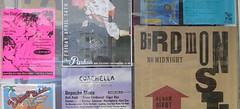
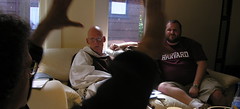
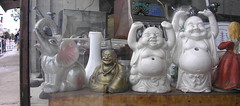

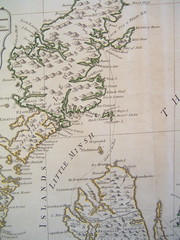
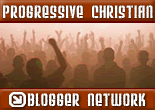


0 Comments:
Post a Comment
<< Home